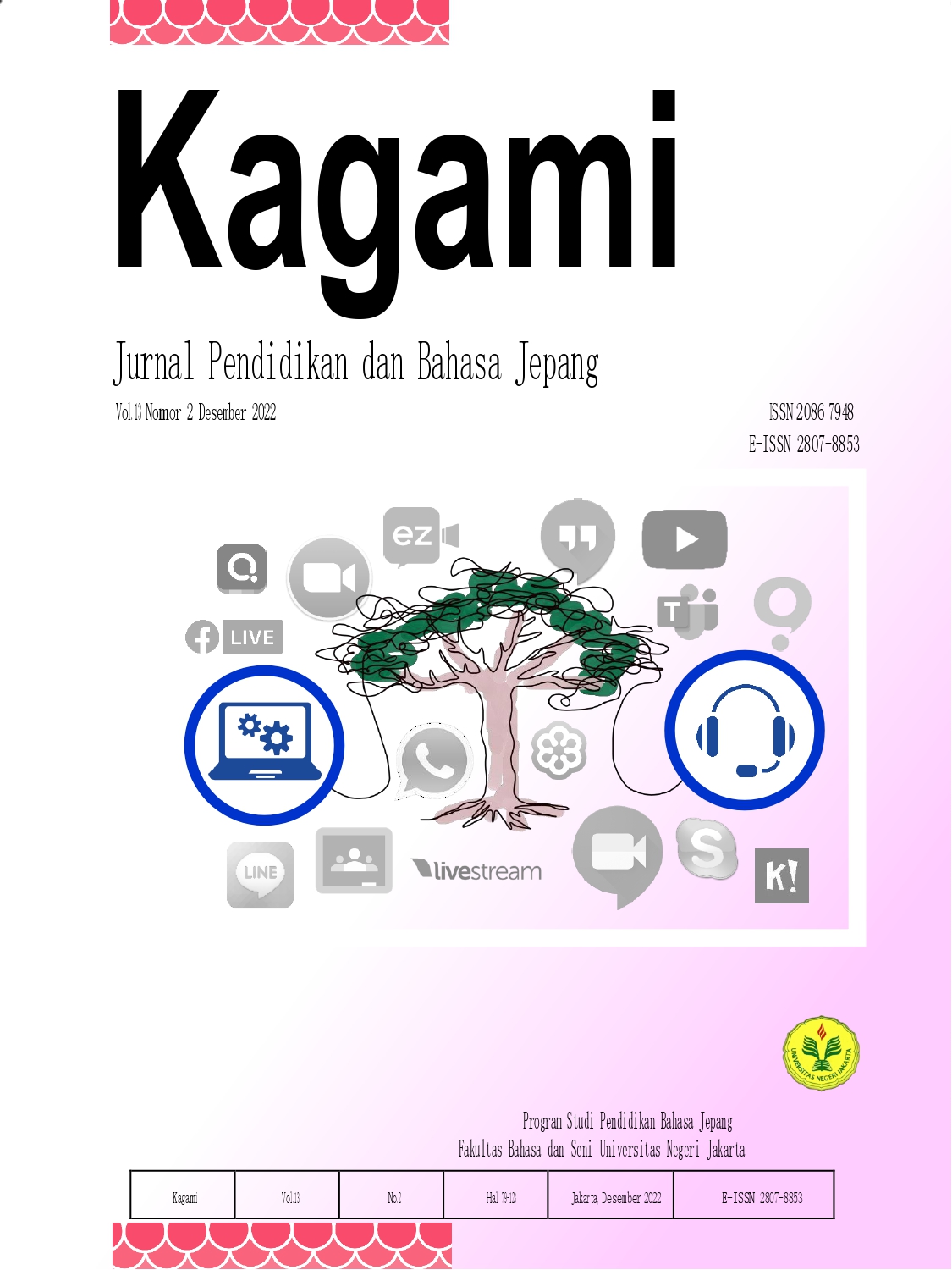Teknik Penerjemahan Amplifikasi Dalam Takarir Film “Gintama Live Action” Karya Hideaki Sorachi
Kata Kunci:
Teknik Penerjemahan Amplifikasi, Film, Gintama Live ActionAbstrak
penelitian ini bertujuan untuk mengetahui bentuk dan fungsi dari teknik penerjemahan amplifikasi dalam takarir film “Gintama Live Action” karya Hideaki Sorachi. Teori yang digunakan adalah teori teknik penerjemahan dari Molina & Albir (2002:510) di mana penambahan dalam teknik ini dengan cara mengungkapkan detail pesan secara eksplisit atau memparafrase suatu informasi yang implisit dari Bsu ke dalam Bsa. Metode yang digunakan untuk penelitian ini adalah metode deskriptif kualitatif dan simak dengan teknik catat karena penelitian ini menggunakan objek film sebagai wadah untuk mencari data yang berkaitan dengan penelitian. Dari hasil penelitian ini diketahui bahwa terdapat teknik penerjemahan amplifikasi dengan bentuk eksplisit yang berfungsi untuk menambahkan makna dari kata yang ambigu. Kemudian bentuk catatn kaki untuk memberikan informasi berupa referensi untuk memudahkan penonton agar memahami makna yang terkandung dalam percakapan baik secara historis maupun budaya. Bentuk deskrispi untuk menambahkan bentuk dari benda atau tokoh yang dibicarakan. Terakhir, bentuk parafrase untuk menjelaskan makna suatu kalimat yang tidak ada bentuk padanan leksikalnya dalam bahasa sasaran.
Referensi
Becher, Viktor. (2011). Explicitation and implicitation in translation. A corpus-based study of English-German and German-English translations of business texts. Dissertation. UNIVERSITÄT HAMBURG.
Hastuti, E. D. Nunun Tri Widarwati, Giyatmi, and Ratih Wijayava. 2011. Analisis Terjemahan Film Inggris-Indonesia: Studi Kasus Terjemahan Film “Romeo And Juliet, 57-66.
Larson, Mildred L. (1991). Penerjemahan Berdasar Makna: Pedoman untuk Pemadanan Antar bahasa(Alihbahasa: Kencanawati Taniran). Jakarta : Arcan.
Lestari, W., Yoyo, Y., & Zaini, A. R. (2020). Amplification and description techniques in the translation of Arabic phrases in Matan Al-Ghayah wa Al-Taqrib. Izdihar: Journal of Arabic Language Teaching, Linguistics, and Literature, 3(2), 113-128.
Mayor, M. (Ed.). (2009). Longman dictionary of contemporary English. Pearson Education India. Tersedia di https://www.ldoceonline.com/dictionary/
Molina, L., & Hurtado Albir, A. (2002). Translation techniques revisited: A dynamic and functionalist approach. Meta: Journal des Traducteurs/Meta: Translators' Journal, 47(4), 498-512.
Newmark, Peter. (1988). A Textbook of Translation. New York: Prentice Hall.
Nababan, M. R. (1999). Teori menerjemah bahasa Inggris. Pustaka Pelajar.
____________. (2010). Teknik-teknik Penerjemahan Teks. Jurnal Kajian Linguistik dan Sastra, 76(3). Surakarta. Universitas Sebelas Maret.
Nida, E. A. (1964): Toward a Science of Translating with Special Reference to Principles and Procedures Involved in Bible Translating, Leiden: E.J.Brill.
Vinay, Jean-Paul & Jean Darbelnet. (1995). Comparative stylistics of French and English: A methodology for translation. Amsterdam & Philadelphia: John Benjamins.
Walter, E. (Ed.). (2008). Cambridge advanced learner's dictionary. Cambridge university press. Tersedia di https://dictionary.cambridge.org/dictionary/english/



